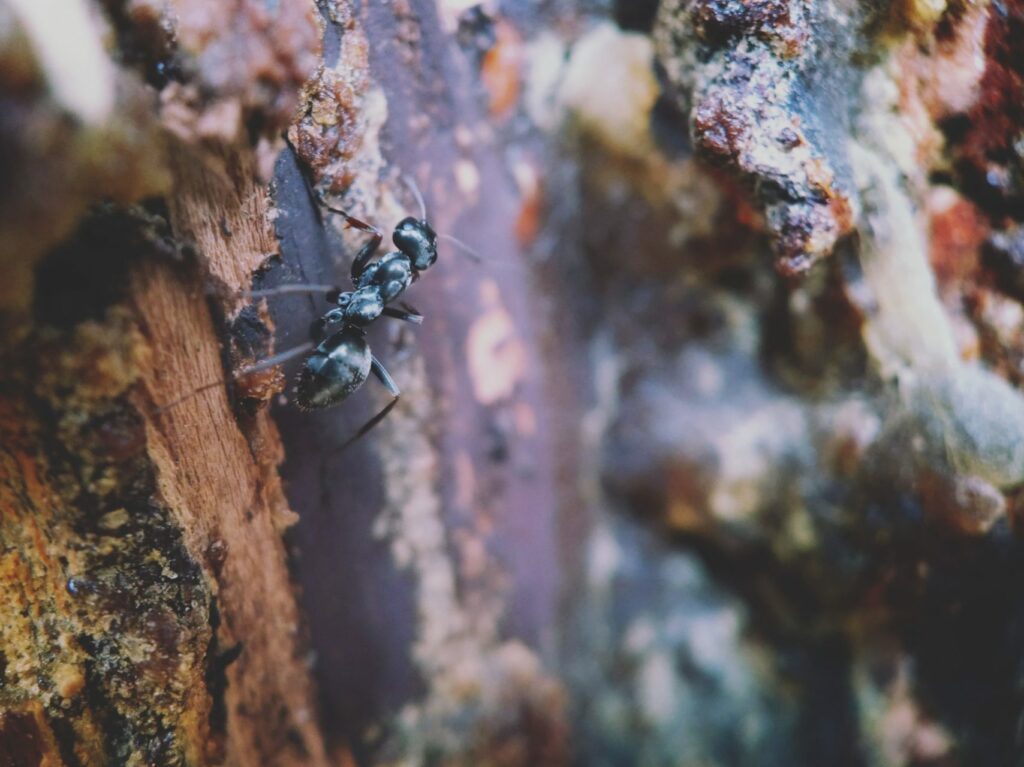
Contents
Moisture around the house can worry homeowners because it could mean mold. An excess of moisture can also affect the wood on the inside and outside of your home, making it soft and rotten. That can become an invitation for some new house guests, the carpenter ant.
The main habitat for carpenter ants includes various wood sources, such as tree stumps, firewood or landscaping. As long as there is a water source nearby, the carpenter ant can survive. If your home has any wet and damaged wood, then the carpenter ant can make its new home inside.
Carpenter ants do not use the wood for food like the termite does, but hollows it out for their home. Similar to many other insects, the carpenter ant can exploit cracks around doors, windows, or through plumbing and electrical penetrations to get inside your house. We also know them to crawl along overhead wires, shrubs, or tree limbs outdoors and then enter the home through any small opening.
Identifying a carpenter ant can be a little tricky, as they can vary in size and color. Typically, the carpenter ant is around a half-inch long and black with a segmented oval body, though they sometimes can be a combination of black and red, or black, red or brown.
The change in temperature and longer daylight hours are signals that the carpenter ants will begin their mating flights, or swarming. Spotting one of the winged ants in your home can mean trouble, as it could indicate that ants are already living inside the house. Whereas the main colony with the queen is typically located outside, satellite colonies with worker ants can form indoors or outdoors.
Because carpenter ants will damage wood to build their nest, they can pose a significant threat to your house and property. You can better prevent that from happening by eliminating sources or moisture or excess water, cutting back branches and bushes away from the house, and filling in any cracks, gaps or openings around the exterior of your house.
Also, because carpenter ants have a strong habit to make areas of damp wood their home, be sure to clear out your lawn and landscaping of any temptation. Any building materials or firewood need to be stored away from your house.
It often takes over one treatment to control the ants in your home. This is necessary because it can take up to one year for all the eggs to hatch, and because colonies are often in inaccessible areas.
While moisture itself around the house can be a problem, it might lead to a worse situation. By controlling the moisture in your home, you can limit that moist or rotten wood that carpenter ants love to live inside. If you spot carpenter ants in your home, or if you recognize any of the signs that they may be present, call Van Den Berge Pest Control at 616-392-7367.
Trust the locally owned, widely renowned experts at Van Den Berge Pest Control for all of your pest needs. With over 100 years of combined experience throughout the Holland, MI-based pest control team, you know you’re in good hands with our state-certified experts.
Recent Posts
Why Trust Our Termite Inspection and Treatment?
Rely on our termite inspection and treatment because our team of experts is certified and
Six Effective Chemical Pest Prevention Methods
They say that prevention is better than cure, and this adage holds true when it
What Is the Best Termite Inspection and Treatment?
For the best termite inspection and treatment, opt for professional services. Experts spot early signs,
